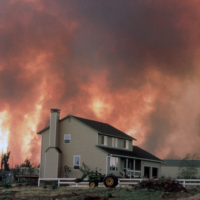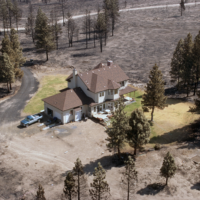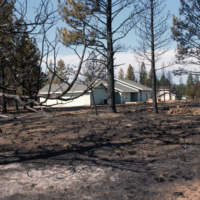A small community nestled in a fragrant forest is the perfect place to call home for many of us.
Communities located in the “wildland-urban interface” adjacent to forests, however, are also at risk from wildfires that regularly visit forested landscapes. While these blazes threaten livelihoods and homes, wildfires don’t have to destroy everything in their path. Science, research, and experience have proven that homeowners who take steps to protect and prepare their homes for the next fire are much more likely to survive wildfires with their property – and lives – unharmed.
According to Firewise, Wildfire behavior is influenced by three main factors: topography (lie of the land), weather (wind speed, relative humidity and ambient temperature) and fuel (vegetation and man-made structures). In the event of extreme wildfire behavior, extreme weather conditions are normally present, like extended drought, high winds, low humidity, and high temperatures, coupled with excess fuel build up including the accumulation of live and dead vegetation material. Additionally, the area’s topography influences the fire’s intensity and rate of spread.
Of these three factors, fuel is the only one we can influence, whether near homes and communities or in the wildland backcountry.



